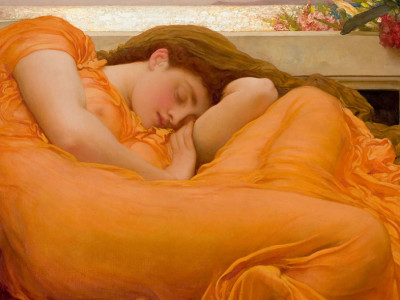
Quilting from the Deep South: a lesson in creativity your way
By Ellen Mara De Wachter
Published on 13 April 2020
Rooted in folk traditions, quilts from the Alabama hamlet of Gee's Bend have long been prized by museums in the States. Now, their unbounded creativity has arrived in the UK.
From the Spring 2020 issue of RA Magazine, issued quarterly to Friends of the RA. Ellen Mara De Wachter is a writer based in London and the author of Co-Art: Artists on Creative Collaboration (Phaidon).
The quilters of Gee’s Bend, an isolated hamlet situated on a bend in the Alabama River, have a term for designs that break with tradition: they are done "my way". Like the best jazz, "my way" quilts are guided by a combination of skill, practice and improvisation. For the past century, women such as Annie Mae Young, Loretta Pettway and Mary Lee Bendolph have stitched together fabric in different shapes, sizes and colours, and by gloriously deviating from prescribed patterns or colour schemes they have exercised an unbounded artistic freedom.
Although quilting in Gee’s Bend dates back to the late 19th century, the practice gathered momentum during the Civil Rights movement with the Freedom Quilting Bee, a co-operative set up in 1966 across Alabama’s Black Belt to enable women to sell their work at auction and through department stores, including Bloomingdales and Sears. Then later, in 1998, the folk art collector William Arnett saw a photograph by Roland Freeman depicting Annie Mae Young alongside some of her quilts that were draped over a woodpile. He visited Gee’s Bend and purchased hundreds of quilts, many of which have since been shown in museums across the US. This year, for the first time in the UK, they were shown as part of the Turner Contemporary show, We Will Walk – Art and Resistance in the American South.

Image Courtesy Turner Contemporary

Basket Weave Variation, c.1990

Image Courtesy Turner Contemporary

'Bars', c. 1965
Collection of the Souls Grown Deep Foundation
Many of the current citizens of Gee’s Bend (whose official name is Boykin) are descended from black people who were enslaved by the Pettway cotton plantation, and who remained in the area after Emancipation in 1863, working the land as sharecroppers and tenant farmers. The community survived through the economic hardships of the 1930s, and in the 1940s families were able to purchase their farms from the government at subsidised prices. These events, along with the Bend’s geographic isolation, produced a tight-knit society with an especially fertile quilting culture whose distinctive aesthetic is the result of experimentation and a predilection for minimalism. These eminently modern values set apart the work of the quilters of Gee’s Bend from more conventional approaches to quilting that were popular across America’s rural states.
As a means to salvage scraps of cloth, transform worn out garments into decorative bedding, and socialise over shared work, quilting is a deeply pragmatic art. Its ethical qualities resonate with contemporary concerns around reuse and recycling, artisanal production and collaboration. Yet this humble art can generate sublime results. In creating "my way" quilts, individuals honour and transform foundational motifs common across America, such as Housetop, or Bricklayer designs, into persuasive declarations of individuality. Anyone who harbours a creative project they dare not initiate can draw inspiration from Pearlie Pettway Hall’s 1950s medallion quilt, which is built around two central blocks – one brown, one white. Its simplicity and grace rivals that of the most distinguished minimalist paintings. In Annie Mae Young’s Bars (c. 1965), which uses a range of fabrics, including corduroy and denim, individual oblongs correspond to trouser legs, while black swatches are alternated with colours to create a visual sense of rhythm. These simple mimetic compositions, rendered with a confidence that is both refreshing and reassuring, convey the importance of stable foundations for individuality and community.
We Will Walk: Art and Resistance in the American South opened at Turner Contemporary, Margate, in February 2020, but is currently closed due to COVID-19.

Enjoyed this article?
As well as free entry to all of our exhibitions, Friends of the RA enjoy one of Britain’s most respected art magazines, delivered directly to your door. Why not join the club?
Related articles

Making Space
15 March 2024

Crunch: inside the first Architecture Window display
14 February 2024

Why is Flaming June iconic?
13 February 2024